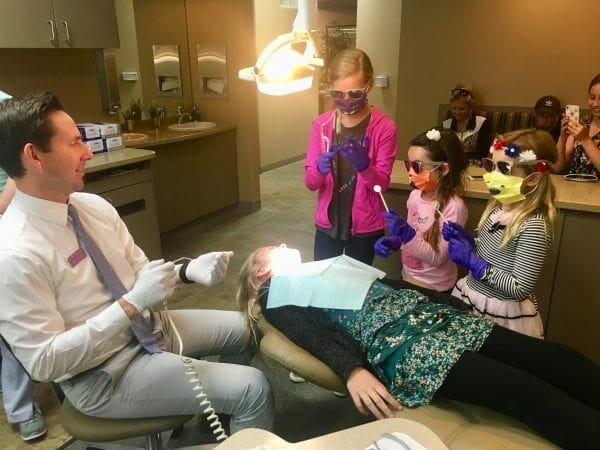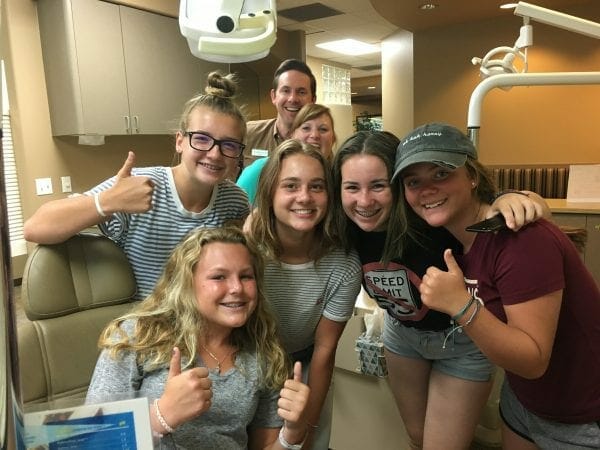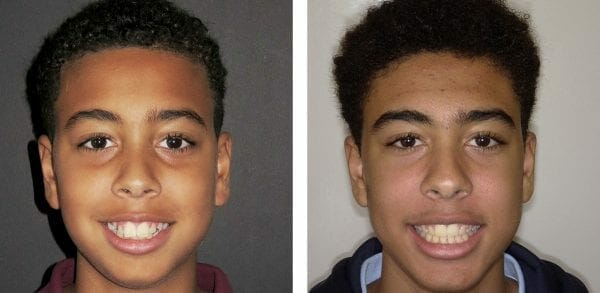How 3-D Imaging Transforms Diagnosis and Treatment
A New Era of Clarity in Orthodontics
A generation ago, orthodontists worked almost entirely from two-dimensional X-rays and plaster models. Today, cone beam computed tomography (CBCT) provides a three-dimensional map of the teeth and jaws—often in less than ten seconds. At Burke & Redford Orthodontists, our CBCT images could be considered as the “MRI of the smile”: a crystal-clear window into complex anatomy that traditional images can only hint at.
Parents who visit our Temecula or Lake Elsinore offices may wonder, “Why does my child need a 3D scan?” This article answers that question in depth—showing how CBCT enhances safety, aids in treatment planning and decision making, and improves the results of braces, Invisalign, and the specialized appliances we use for growing patients.
What is CBCT?
- Cone beam refers to the cone-shaped X-ray beam that rotates around the head.
- Computed tomography means the machine’s software reconstructs hundreds of low-dose images into a true 3-D view.
The result is a volumetric model that can be sliced in any plane—front-to-back, side-to-side, or top-to-bottom—without distortion.

Key advantages over 2-D films:
- Zero overlap of roots or jaw structures—critical for tooth-level detail.
- True measurements (length, width, and angulation) with no magnification error.
- Single scan replaces multiple traditional X-rays, often at a similar or lower radiation dose.
Why CBCT Matters for Children and Teenagers
Growing patients present unique challenges:
| Diagnostic Need | 2-D Limitation | CBCT Solution |
| Impacted teeth | Overlapping roots hide exact position | 3-D identifies depth, angle, and proximity to adjacent tooth roots |
| Jaw asymmetry | Panoramic images distort width | CBCT distinguishes bone asymmetry from dental tipping |
| Temporary anchorage devices (TADs) | Blind placement near roots | 3-D aids in locating safe miniscrew sites, avoiding damage |
Early clarity often means simpler treatment: less invasive treatment plans and accurate assessment of the risk impacted teeth may present.
Burke & Redford Orthodontists CBCT Workflow
- Low-dose scan (6–8 seconds).
- Our Planmeca ProMax® 3D Classic unit adjusts radiation automatically for smaller patients.
- Digital impression (iTero).
- Combines with CBCT to build a “digital twin” of teeth and bone.
- Integrated treatment plan.
- Dr. Redford or Dr. Burke uses the information obtained from the 3-D scan to make a customized treatment plan for the patient.
- Parent consultation.
- We review 3-D findings on an easy to view monitor, so families see exactly why a tooth stuck in the jaw (Ie. an impacted canine) is a problem and how it can be addressed.

Practical Applications
Treating Ectopic and Impacted Canines
A common problem encountered by orthodontists is impacted canines. This refers to when a canine tooth is stuck in the jaws (underneath the gums). This can be a serious problem because impacted canines can damage the roots of the adjacent incisor teeth. CBCT helps by:
- Identifying the exact position of the impacted canine(s).
- Confirming whether roots of teeth adjacent to the canines have sustained damage. This will help determine how proactive or conservative a treatment plan to pursue.
- Planning precise movements to guide the impacted canine safely around the roots of other teeth and into the mouth.

Miniscrews for Vertical Control (Open-Bite Management)
As discussed in our previous article, miniscrews intrude molars or extrude incisors. CBCT lets us:
- Measure inter-radicular space to millimeter accuracy.
- Verify sinus floor location to avoid sinus perforation.
Result: faster open-bite closure with less discomfort, potentially avoiding jaw surgery.
Radiation Safety—What Parents Should Know
Modern CBCT machines use pulsed emission and child-size fields of view. Key facts:
- A typical orthodontic CBCT (~60 µSv) is similar to one trans-Atlantic flight or two weeks of normal background radiation.
- We follow ALARA principles— “as low as reasonably achievable”—scanning only when the diagnostic benefit outweighs the dose.
Example Case Study – Emily, Age 10
Problem: upper permanent canine teeth erupting waywardly (ectopically).
CBCT Findings
- Canine tooth positioned out of the normal arch form towards the roof of the mouth.
- No damage (root resorption) to the adjacent permanent incisor roots to date.
Treatment Plan
- Space maintainer place to preserve dental arch length.
- Removal of the baby canine teeth to encourage normalization of the permanent canine position.
- Checkup appointments at regular intervals to ensure the space maintainer is working properly and that the permanent canines are re-directing as expected.
Outcome (18 months)
- The permanent canines normalized their eruption paths and erupted into the mouth spontaneously.
- The safety and integrity of the incisor roots was maintained.
- Avoidance of surgical recovery of the canines had they worsened without intervention.
Emily now is ready for comprehensive treatment with braces or Invisalign for teens in a straightforward and predictable way.

How CBCT Streamlines the Patient Journey
| Stage | Without CBCT | With CBCT at B&R |
| Diagnosis | Multiple 2-D films to localize impacted canines, possible exploratory surgery | Single 3-D scan answers where impacted canines are located and if they have compromised adjacent tooth rotos |
| Comfort & Safety | Blind TAD placement risks roots/sinus | 3-D imaging helps with safe, quick insertion |
| Parent Confidence | Hard-to-interpret X-rays | 3-D visuals everyone understands |
Our Orthodontic Services Integrated with 3-D Imaging
Self-Ligating Braces (metal braces & ceramic)
When canines are impacted, we use your child’s CBCT scan we map exact tooth positions and plan for the needed tooth movements. The result is safer, more efficient treatment—whether your teen selects the low-profile metal brackets or the nearly invisible ceramic braces option.
Miniscrews (TADs) for Bite Correction
TAD placement used to be “feel and hope.” Now we use the CBCT images to plan where to place the TADs.
Frequently Asked Questions
Q: How long does the CBCT appointment take?
A: The scan itself is under 10 seconds; the entire visit is usually 20-30 minutes if only records are being taken or 30-60 minutes if a sit-down consultation is taking place.
Q: Can my child move during the scan?
A: The unit captures images rapidly, but we have techniques to “coach” young patients so they stay still.
Q: How often is CBCT repeated?
A: Additional scans are only taken if essential for safety or major plan changes.
Why Families Trust Burke & Redford Orthodontists
- Board-certified expertise – Dr. Redford and Dr. Burke (both ABO certified) have over 40 years of combined experience.
- Cutting-edge tech – Planmeca CBCT, iTero scanners, state of the art bracket and aligner systems.
- Kid-centric care – Experienced and gentle assistants.
- Transparent fees – Interest-free payment plans; family discounts.
- Proven results – Tens of thousands of successfully treated cases.

Ready to See Your Child’s Smile in 3D?
An early, accurate picture is the first step toward a healthy bite and lifelong confidence. If your child has impacted canines, crowding, or a crossbite, or if you just want an expert opinion, request a consultation with our team today.
Call Our Office 📞 (951) 699-8011
Experience the clarity of CBCT and the caring expertise of Burke & Redford Orthodontists, where every growing smile gets the precision it deserves.